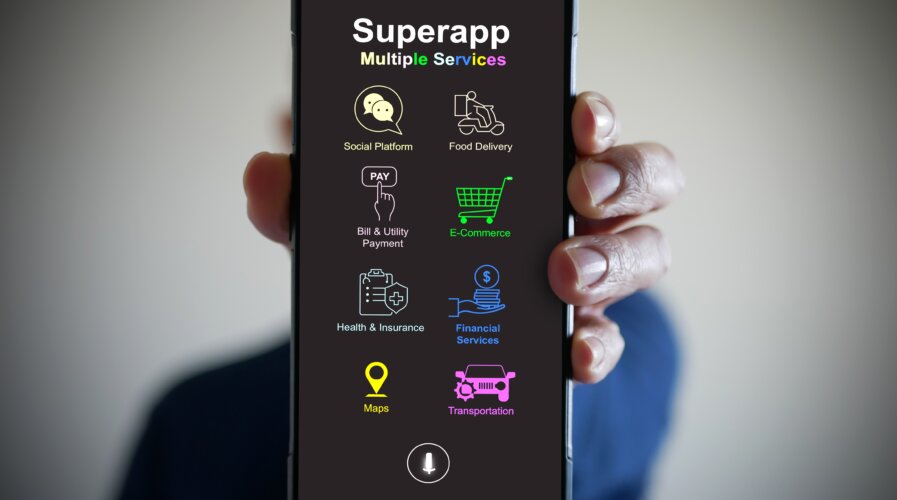
(Source – Shutterstock)
How super apps are redefining customer experience in Singapore and what brands need to know
|
Getting your Trinity Audio player ready... |
Article by Lara Truelove, Program Lead for the Center for Experience Management at SAP
Life in Singapore is lived very much in a mobile way.
Across the Lion City, people use their mobile to shop, make purchases, stream TV shows and movies, order food, communicate with their friends, and much more. And the majority of people are choosing to accomplish many of these daily tasks through a single app. A super app.
Over the last few years, super apps have become integral to the way of life in Asia, changing how people choose to engage with brands and how they use their mobile devices. To highlight the broad adoption and impact on consumers in Singapore, 56% of people in the country have used a super app recently, with 35% using super apps at least a few times a week – according to the latest The Customer Experience Edge Singapore 2023 report from the Center for Experience Management.
The increasing adoption of super apps heralds a new age of customer experience in Singapore and across Asia. Organizations need to know what super apps their customers are using, what types of customers are using them, and what services they are using them for. Additionally, brands need to be able to trust the super app to deliver a seamless customer experience on their behalf.
This new reality means tuning into the diverse needs of customers across all channels is more important than ever before. Especially when you consider CEOs who believe changing customer demands will have the biggest impact on profitability over the next decade, and how poor customer experiences are putting US $180 billion of consumer spending at risk across Asia.
The dos and don’ts of super apps
Half (51%) of super app users in Singapore are using them at least a couple of times a week – with 22% using one every single day. The most frequent use cases are shopping for general items, buying groceries, ordering food and ride-hail services, paying for items in-store, and arranging for items to be delivered.

Lara Truelove, author of the report and Program Lead for the Center for Experience Management
Digital wallets, in particular, one of the most common features of super apps, which is reflected in their usage and consumers’ intent to use them – 59% of respondents said they have used any type of digital wallet to make a physical purchase in the last 12 months, and 64% said they intend to use a super app to make a physical purchase in the next six months.
Brands operating across these common use cases must ensure super apps are a key part of their go-to-market strategies or they’re missing a significant portion of their customer base.
As well as knowing how consumers are using super apps, it’s important to know what services customers aren’t using them for and the reasons for this. For example, almost half of the respondents to the Center for Experience Management study said their decision to interact via any app or digital platform or human-to-human depends on the nature of the interaction.
Consumers have less intent to use a super app for listening to music, messaging friends, and buying insurance, according to the study. When it comes to factors that would increase super app usage, feedback suggests overcoming consumers’ concerns with privacy and security is one of the main areas to address. The study also revealed that consumers are looking for improvements in mobile app ease of use and payment options, across many of the brands and apps that they interact with.
These insights into when customers aren’t using super apps are equally valuable to brands, helping them to confidently focus their efforts and investments on engaging customers and forming industry partnerships while identifying possible issues that need resolving.
Great CX is not a one size fits all
Super apps are now a fundamental part of the customer experience in Singapore, and their influence and dominance can be expected to grow. For brands, one of the most pressing aspects of this shift is understanding how super apps are being used and who is using them. One of the most prominent findings is the pervasiveness of mobile wallets, including those in super apps. Brands need to be alert to shifts in payments and regularly check that their customers’ payment journeys are meeting expectations. Knowing the answer to these questions is going to be critical to their immediate and long-term growth and success.
Equipped with the right customer insights, brands can tailor how they deliver services via super apps to ensure this new channel complements their customer experience for the people that are using them while maximizing the investments they’re making in the space. The gate posts for desired customer experience are always moving – staying up to date with super apps as prominent digital channels of choice and simultaneously knowing why customers aren’t using super apps will help organizations to avoid lagging behind.
The view in this article is that of the author and does not reflect the views of Tech Wire Asia.
READ MORE
- Safer Automation: How Sophic and Firmus Succeeded in Malaysia with MDEC’s Support
- Privilege granted, not gained: Intelligent authorization for enhanced infrastructure productivity
- Low-Code produces the Proof-of-Possibilities
- New Wearables Enable Staff to Work Faster and Safer
- Experts weigh in on Oracle’s departure from adland


